We can solve and prevent
contamination in food production factories
-
Physical contamination
- - human hair
- - broken machine pieces
- - equipment pieces
- - gravel from raw material
-
Chemical contamination
- - machine lubricants
- - pesticides
- - animal hormones
- - toxins
- - heavy metals
-
Biological contamination
- - bacteria
- - virus
- - parasite
- - fungus
- - pest
-
Allergen contamination
-
-
animal protein
(milk, fish, shellfish, eggs) -
-
plant protein
(tree nuts, peanut, soy, wheat) - - air pollen & dust
- - surface residue
-
-
animal protein
ITO Thailand Hygiene Solutions
Clicking on each area to find products information









Sanitary area
-

Dust Cleaner
The Dust Cleaner is guaranteed to reduce contamination from hair and dust plus it will also reduce your electrical consumption.
-

Roller timer
Capable to track and monitor the usage of body roller via laptop or smartphone. Easily control the time and number of uses.
-

Body roller
Prevent cross-contamination from food containing allergens and others. Rollers are mixed with antibacterial agents. Easy to clean and no maintenance is needed.
-

Step mat
Remove dust, grime, contaminants from soles of shoes with 99.9% removal rate.
-

Solution maker
Environmentally friendly, effective, and affordable sterilizing agents for maximum hygiene. Suitable for every industry.
Inspection area
-

Metal detector
Prevent physical contamination of foreign metal objects with high inspection quality metal detector.
Packing area
-

Weight checker and system
Adjustable and customizable to customer's need Japanese standard with famous company reference. Prevent NG product by over or under weighing.
-

Packing robot
Reduce workload and increase production efficiency with automatic packing robot. Uniform and fast transport products from conveyor belts into carton boxes.
-

Palletizing/Depalletizing system/デパレタイザー
The use of Palletizing Robots in distribution or warehouse locations continues to grow and ITO Thailand can supply your business with the right model for your factory automation project.
-

Spider robot
The Motoman MPP 4-axis high-speed picking robot was developed for order picking, high-speed picking, and other handling applications. This model features a maximum payload of 3 kg.
-

Vision inspection system
Physical inspection system to maintain product qualities (ex. size, shape, color, uniformity, etc.) and misprinting of packaging. Allergen labelling inspection feature also available.
-

Barcode reader
ITO OCR Inspection System and Barcode Reader is quality inspection system to inspect character printing and Barcode, including reject system from automatic conveyor system.
-

Strapping machine
Strapping machine or a banding machine is capable of allotting, tightening, and fastening polypropylene straps around the packages, automatically. Its heater assists in applying pressure 12 on the strap and connects the ends with heat welds. Automatic strapping machine power switch have inbuilt sensors that makes the motor to switch off while not working and again restarts automatically with the insertion of strap.
-

Wrapping machine
This fully automatic wrapping machine wraps and cuts film. This stretches wrapping machine features a PLC and transducer control that can design the wrapping method and number of times it wraps. Its compact size ensures it fits into most 14 factory layouts. This feature full wrapping machine can use up to 67% less stretch wrap.
Warehouse and shipping area
-

Mobile rack
ITO Thailand supplies mobile racks that are designed for high-density space conservation. Conventional racking requires permanent aisles between racks, and this leads to insufficient storage capacity.
-

Cold room speed door
Saving energy of your cold storage and reduce temperature fluctuation. Suitable materials for -5 to -25 ℃. The model include heater and automatic ice shaking system.
-

Dock loading
“Dock Leveller” is designed to flexibly connect the platform and the truck, so the handling vehicles can smoothly pass in-out of the container to load and unload the cargo. It is necessary equipment for modern logistics warehouse and factory.
Outdoor area/others
-

Pest prevention net
Prevent your factory and warehouse from pests with insecticide net and high durability bird protection net.
Cooking area
-

High speed shutter door
A high-speed shutter door can greatly reduce air conditioning costs simply by reducing the time that space is open to the outside environment, with choices of pest prevention and microbial reduction systems.
-

Color & detectable cooking equipment
Elevate hygiene and reduce cross-contamination risk with colour-code cooking equipment with metal detector-compatible feature.
-

Color cleaning equipment
Cleaning brush are produced based on international standard with food grade materials with specific design suitable to use in food industry. Color code feature is applied to prevent cross-contamination.
ITO Thailand Hygiene Video
ITO Thailand Hygiene Blog
-
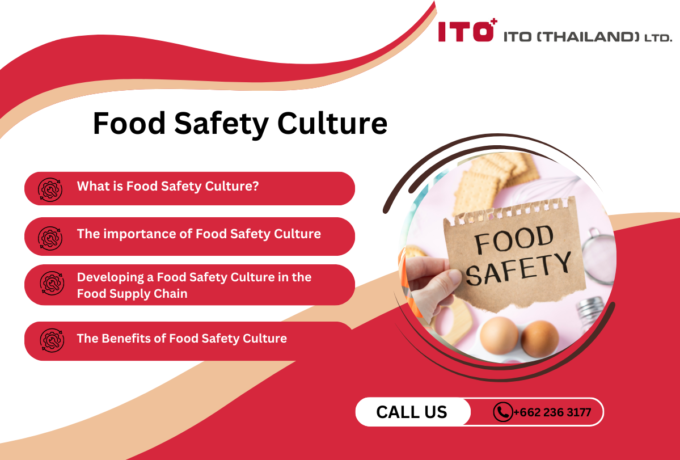
Food Safety Culture
Food safety culture plays a crucial role in safeguarding the company's reputation, ensuring the well-being of its employees, and providing a safe experience for its customers.
-
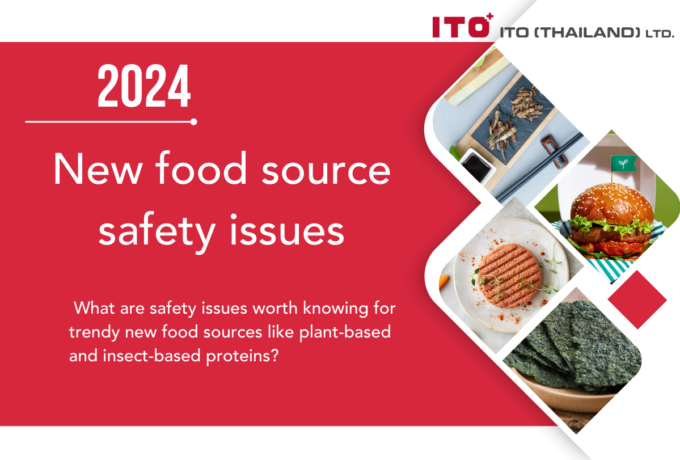
New food source safety issues
What are safety issues worth knowing for trendy new food sources like plant-based and insect-based proteins?
-

British Retail Consortium (BRC) Standard
Food safety management systems play a vital role in ensuring the production and distribution of safe and high-quality food products to consumers. With the global food supply chain becoming increasingly complex, food businesses must implement effective systems prioritising safety, quality, and compliance with industry standards. A food safety management system encompasses a set of procedures, processes, and controls designed to identify, prevent, and manage potential hazards at every stage of the food production and supply process. This proactive approach not only safeguards consumers' health but also protects the reputation and credibility of food companies in an ever more competitive market.
-
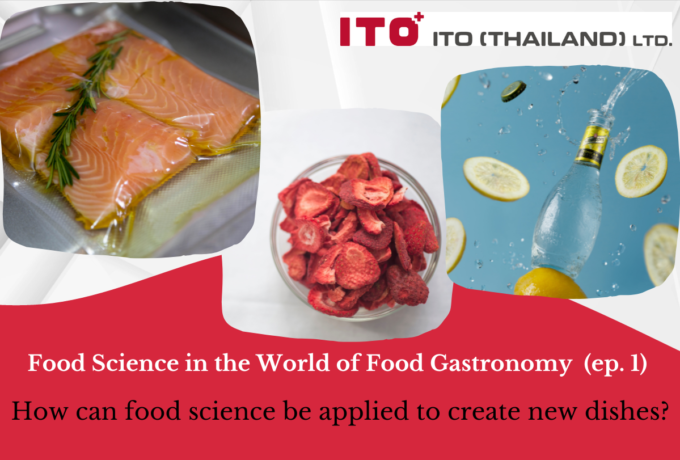
Food Science in the World of Food Gastronomy (Part 1)
How can food science be applied to create new dishes?
-
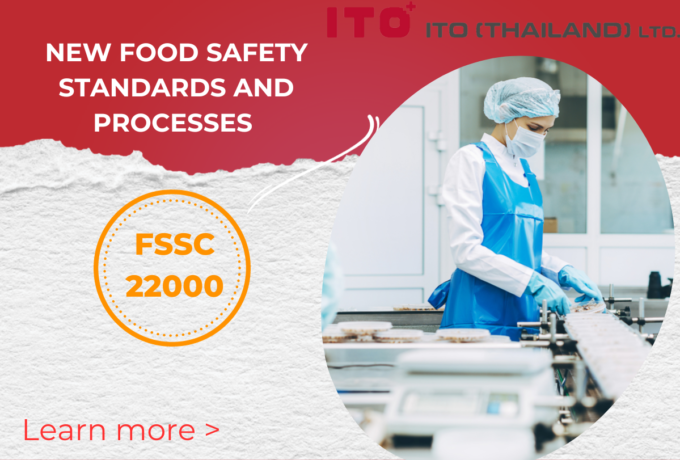
FSSC 22000
Food manufacturers must ensure food safety standards and processes. FSSC 22000 is an official certification program for Food Safety Management Systems (FSMS) recognised by the Global Food Safety Initiative (GFSI). This certification scheme offers a set of guidelines and procedures to ensure uniformity, openness, and safety across your entire supply chain. It applies to all companies operating within the food and beverage industry, ranging from farmers to retailers. By fulfilling the necessary criteria and obtaining FSSC 22000 certification, it is demonstrated that the required standards for food quality and implementing effective processes to manage and mitigate risks associated with food fraud, foodborne illnesses, expensive recalls, and other external threats are met.
-

Food Safety Aspects of Artificial Sweeteners
Artificial sweeteners, also known as sugar substitutes, non-nutritive sweeteners, or high-intensity sweeteners, are artificially produced compounds utilised in place of sucrose (table sugar) to add sweetness to food and drinks. Due to their significantly higher sweetness than regular sugar, only a fraction of artificial sweeteners (200 to 20,000 times less) is required to achieve an equivalent level of sweetness. Since the caloric contribution of these sweeteners, when used in such small quantities, is insignificant, they are often referred to as non-nutritive (4).
-

Food Safety Culture
Food safety culture plays a crucial role in safeguarding the company's reputation, ensuring the well-being of its employees, and providing a safe experience for its customers.
-

New food source safety issues
What are safety issues worth knowing for trendy new food sources like plant-based and insect-based proteins?
-

British Retail Consortium (BRC) Standard
Food safety management systems play a vital role in ensuring the production and distribution of safe and high-quality food products to consumers. With the global food supply chain becoming increasingly complex, food businesses must implement effective systems prioritising safety, quality, and compliance with industry standards. A food safety management system encompasses a set of procedures, processes, and controls designed to identify, prevent, and manage potential hazards at every stage of the food production and supply process. This proactive approach not only safeguards consumers' health but also protects the reputation and credibility of food companies in an ever more competitive market.
-

Food Science in the World of Food Gastronomy (Part 1)
How can food science be applied to create new dishes?
-

FSSC 22000
Food manufacturers must ensure food safety standards and processes. FSSC 22000 is an official certification program for Food Safety Management Systems (FSMS) recognised by the Global Food Safety Initiative (GFSI). This certification scheme offers a set of guidelines and procedures to ensure uniformity, openness, and safety across your entire supply chain. It applies to all companies operating within the food and beverage industry, ranging from farmers to retailers. By fulfilling the necessary criteria and obtaining FSSC 22000 certification, it is demonstrated that the required standards for food quality and implementing effective processes to manage and mitigate risks associated with food fraud, foodborne illnesses, expensive recalls, and other external threats are met.
-

Food Safety Aspects of Artificial Sweeteners
Artificial sweeteners, also known as sugar substitutes, non-nutritive sweeteners, or high-intensity sweeteners, are artificially produced compounds utilised in place of sucrose (table sugar) to add sweetness to food and drinks. Due to their significantly higher sweetness than regular sugar, only a fraction of artificial sweeteners (200 to 20,000 times less) is required to achieve an equivalent level of sweetness. Since the caloric contribution of these sweeteners, when used in such small quantities, is insignificant, they are often referred to as non-nutritive (4).
-

Biodegradable Packaging
As straightforward as its name, it means any packaging that will naturally fall apart and decompose. In recent years, biodegradable packaging has been included as one of the sustainable development goals for several organisations. A similar issue, bioplastics, an alternative to sustainable living, was discussed in a previous blog. However, there are some differences between them. For example, bioplastics are made from raw materials sourced from renewable and natural sources and could or could not be biodegradable. In contrast, biodegradable plastic can naturally degrade through living organisms no matter the source material it originates from. The development history of biodegradable packaging, frequently used materials, the pros and cons of biodegradable packaging, and its future trends will be discussed in this blog.
-

Precision Agriculture
Precision agriculture has revolutionised how we approach crop management by optimising the inputs to meet specific requirements. Even though it is not a new system, recent technologies have made it possible to apply it in practical productions. In this blog, we will discuss the definition of precision agriculture, its pros and cons, and future trends.
-

Vertical Farming
Agriculture has utilised nearly all the available land, causing growing difficulty in finding land on the earth’s surface. With limited resources, meeting the world’s food demands will require more innovative and dependable methods of producing safe food, and the answer lies in vertical farming.
-
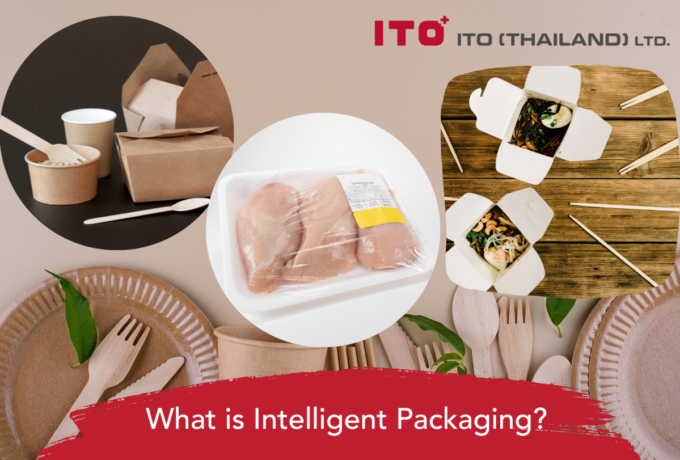
Intelligent Packaging
Without packaging, food products would last for only a short period of time, impossible for logistics management, difficulties in the supply chain system, quick quality deterioration, and prone to contamination to risky foodborne pathogens. In reality, there are many more functions that packaging is contributing to food products, as well as many types of smart packaging. Intelligent packaging is considered to be a part of smart packaging, so in this blog, we will discuss the contribution of intelligent packaging to food products.
-
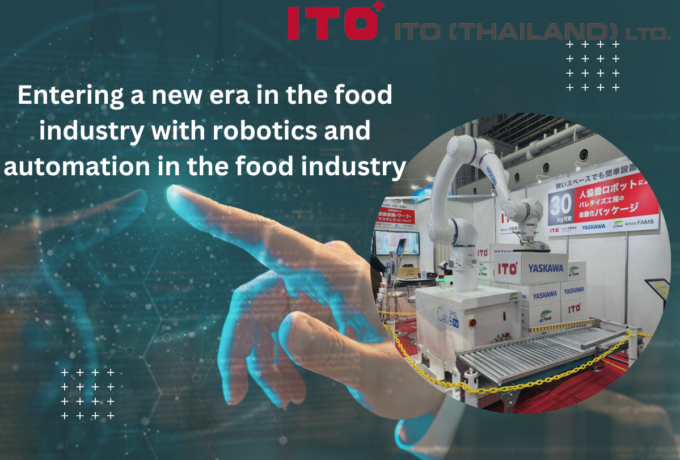
Robots & automation in the food industry
Entering a new era in the food industry with robotics and automation in the food industry
-
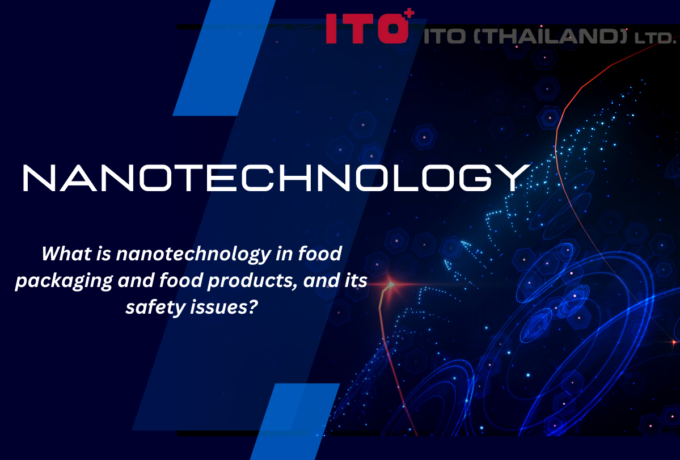
Nanotechnology in the Food Industry
Nanotechnology has been brought to our attention for the last decades, and it has provided various beneficial applications to the food industry. Unlike other technology, nanotechnology has broadened the knowledge in the food industry to another level in a nanoscale dimension. It involves almost every aspect of the food industry, including food packaging, food processing, as well as functional food development and enhancement of food safety. In this blog, we will discuss how nanotechnology is used in food packaging and food products, and the most important part, its safety issues.
-

Liquid nitrogen in food industry
You maybe have heard that liquid nitrogen can rapidly freeze the food, haven’t you? And what are its advantages and benefits? Let's get to know the liquid nitrogen in food industry with ITO (Thailand).
-
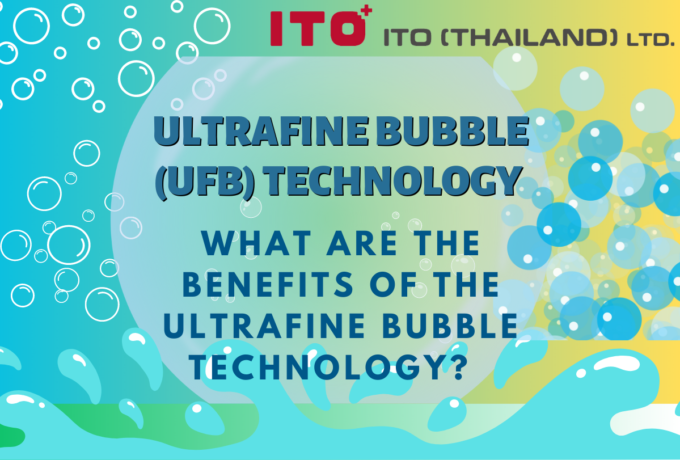
Ultrafine bubble (UFB) technology (Part 2)
The previous content has discussed the benefits of the ultrafine bubble technology in agriculture, livestock, and fisheries, cleaning raw materials and various surfaces. Today, we will continue to learn about the use of the ultrafine bubble technology in food production processes and waste management from the food industry and how to create these tiny gas bubbles.
-
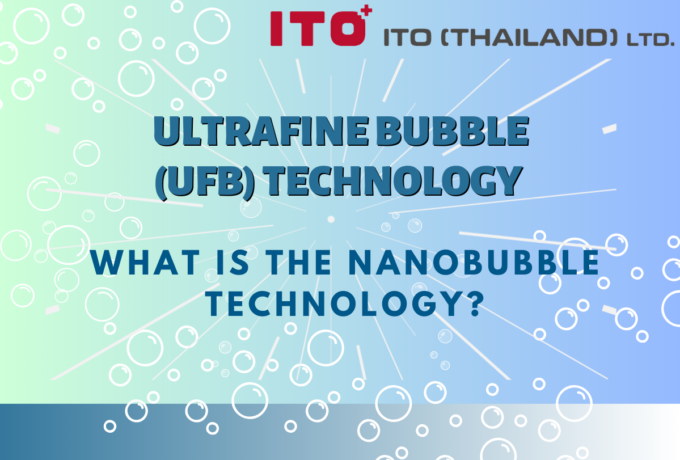
Ultrafine bubble (UFB) technology (Part 1)
Simple bubbles when transformed into the micro-nano level can do more than you think. Let's learn about the technology of these tiny bubbles and their application in the food industry with ITO (Thailand).
-
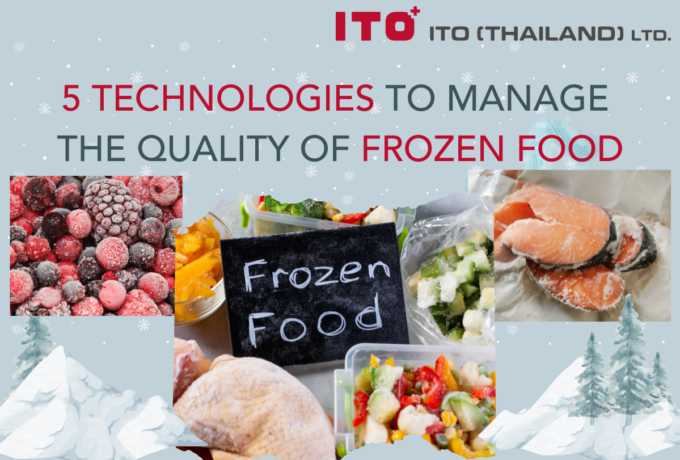
Frozen food storage management
Freezing is a method of food preservation commonly used in food that goes bad quickly such as ready-to-cook fresh food, ready meals, or foods in which nutritional values decay easily, or have substances that are sensitive to temperature, light, oxygen, etc. Freezing uses a principle of quickly solidifying water in the products, making the molecules of the substances unable to react to one another, thus the foods last longer. It also suppresses the growth of microorganisms and kills parasites. For instance, USFDA suggested controlling parasites in fish consumed raw such as sushi and sashimi by freezing the fish at the minimum of 20 degrees Celsius for 7 days or stored at -35 degrees Celsius for 15 hours to control parasites in fish (conditions may depend on the size of the fish as well).
-

Boot Cleaner
Pay attention to the hygiene of the footwear for good hygiene in the food industry
-
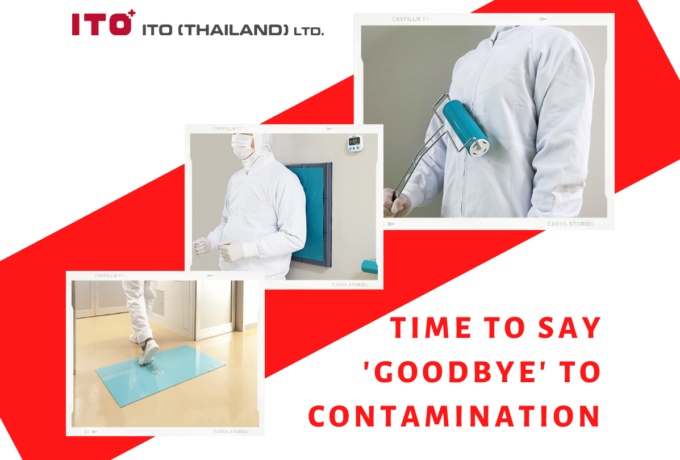
Innovation for sustainable physical contamination prevention
It is known that external impurities pose a food safety risk. One of the main channels of contamination is the presence of humans as a carrier of dust and dirt into the production or high-risk areas, causing dirt, germs, or foreign matters to contaminate food and harm consumers.
What’s News
-
10/07
2023
Propak event 2023
Welcome back to Propak Asia 2023, the exhibition showcasing innovations for the food, beverage, consumer products, and pharmaceutical industries, held from June 14th to 17th, 2023 at BITEC (Bangkok International Trade and Exhibition Centre) in Bangkok, Thailand.
-
19/12
2022
Top 5 on Products Information
Contents review in 2022 - Products Information
-
13/12
2022
Top 5 Food Tech Contents
Content review in year 2022 - Food Innovation / Food Tech
Company Profile
ITO Corporation's mission is to contribute
to our customers and to society via the values born
from new pairings and findings.
Corporate Philosophy
- Create New Opportunities for Our Customers
- An Organization Which Excites All
- Improve the World via Moving Equipment
ITO(THAILAND)LTD.
CHARTERED SQUARE BLDG.
15F Unit 15-02C 152 North Sathorn Road,
Silom Bangrak, Bangkok, 10500



















